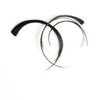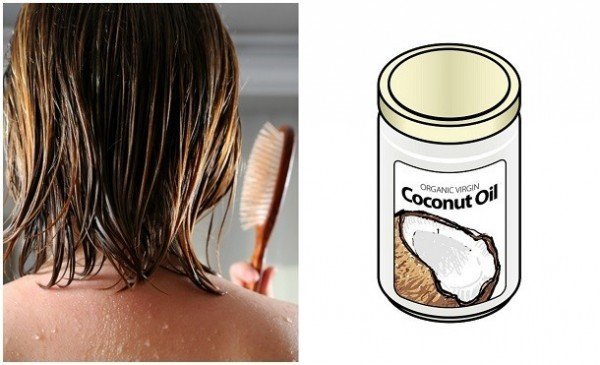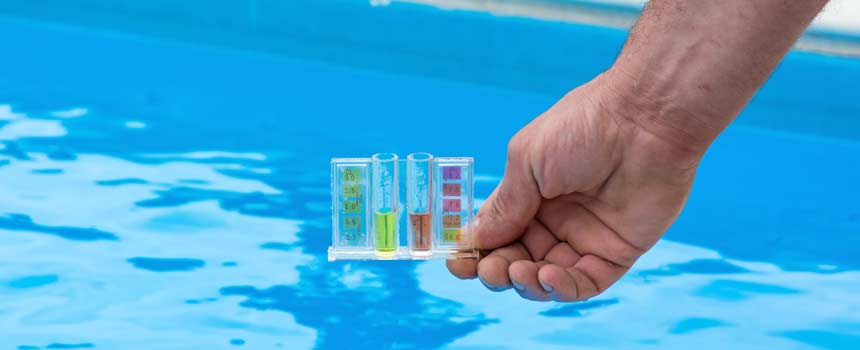|
The sun can leave hair dry, brittle and discoloured. Here’s how to fix it
We all know the damage the sun can do to exposed skin, but experts say it can also affect our hair. “If your hair is exposed to the sun for long periods of time, UVA and UVB rays can start to damage the outer layer of the hair called cuticle,” said hair stylist and colourist Frederic Bataclan of Loft Hair Lounge in Toronto. “The sun is very natural but it can make your hair very dry. Too much of one thing can be bad for you.” The Cleveland Clinic adds the sun’s rays basically act like bleach. “Bleach reacts with the melanin in hair and removes the colour in an irreversible chemical reaction. Bleach also damages the hair’s cuticle and protein, which is called keratin,” dermatologist Dr. Wilma Bergfeld said. Signs for hair types The most common signs of sun damage include discolouration of your ends, as well as your overall hair colour getting lighter (even if you don’t have dye in it). People may also have dry, brittle, overly-tangled, broken or whispy ends. “And lots of frizz,” he explained. “Sun-damaged hair also won’t hold the style as long and dries a lot quicker than healthy hair.” He adds people who have lightened hair (either through highlights, balayage or ombre), will experience the most sun damage. “They will find their toners don’t last as long due to the sun,” he continued. For people who have blond colour, the sun can turn it golden or brassy. For people with “fashion” colours like red, green, blue or multicolours, their hair will fade a lot faster in the summer. “People who have brunette hair will find their hair looks quite dull.” If you have fine hair, Bataclan said your hair will be flat and lifeless during the summer, and people with thin hair may experience irritated scalps or even a sunburn. “If left untreated, the hair will slowly break off due to dryness,” he adds. “The hair will be very tangled and unmanageable.” He adds people who don’t treat sun-damaged hair are often forced to cut it off until it grows back into a healthy state. “People with already thinning hair will accelerate the process of thinning.” How to treat sun damaged hair To start, Bataclan recommends a liquid keratin treatment. “It helps revitalize and protect your hair from the sun and lasts for up to four months.” You can also use serums that have jojoba oil or hair products that already have SPF in them. “Lastly, try to put a mask once a week during the summer. It will help to add moisture back into the hair that you’ve lost from the long exposure from the sun.” There are also products, like primers, that come with UV protectors — this can also help with taming frizz and detangling dry hair. Bergfeld said you should also avoid hot irons, rollers or chlorinated water in swimming pools. “If you bleach or highlight your hair, you’ve damaged the hair already,” Bergfeld explained. “To add to that by swimming in a chlorinated pool, or sitting out in the sun, you’re going to have very significant hair breakage.” Bataclan also recommends wearing a hat, and Bergfeld adds avoid peak sun hours just like you would do for your skin. This article appeared on Global News
0 Comments
6/30/2018 0 Comments Tips to Treat Your Sunburned ScalpWarmer weather is finally coming, and we all can’t wait to soak up the sun—but forgetting to protect your head can leave you scrambling to figure out how to treat a sunburned scalp.
While aloe will do the trick to treat your burn, it can get messy and greasy in your hair—so we’ve compiled a list of other treatments you can do at home to sooth your itching, burning scalp. Wash Away When it comes to washing your hair, you’ll want to ditch your normal volumizing or color-safe shampoo for a few days and instead opt for a exfoliating shampoo or mask while your scalp is still healing. Your head is desperate for moisture at the moment, and this is a great way to give it the hydration it needs while also helping to get rid of flakes. Speaking of flakes, while the dead skin may resemble dandruff, it should definitely not be treated like so. Avoid dandruff shampoos at all costs, as the chemicals in them might irritate your scalp even more. At Home Remedies Some of the quickest ways to relieve the burn can be found right in your kitchen. Within the first 24 hours of getting burned, whip up a quick Green Tea Rinse for your hair by steeping two Green Tea bags and cooling them to lukewarm in the fridge. Once you’ve shampooed, soak your hair in the tea for five minutes before rinsing. The antioxidants found in green tea will be ultra soothing to your scalp and help to alleviate the sting. Another option? Apple Cider Vinegar. Celebrities already claim it to be a miracle worker for the rest of your body, so it’s no surprise that the acid found in it will also help relieve your scalp. Mix one part Apple Cider Vinegar and one part water to create a mixture to be used after you shampoo and condition your hair. The last, and probably weirdest, at home remedy to use is 2% milk. The trick, used by dermatologists to treat chemical burns, is to soak a washcloth in ice cold milk and apply it to the scalp for up to five minutes. The enzymes and proteins found in milk promote healing, and the cold temperature will help reduce inflammation. Avoid the Itch Just like the skin on your body, your scalp is inevitably going to start to itch and peel. While it’s gross on your body, it’s even worse on your scalp because the dead skin will get stuck in your hair and start to resemble dandruff—and nobody wants that. As tempting as it is to scratch and pick at your head until it’s all gone, this is actually the worst thing you can do. Itching will only inflame the already sensitive skin and your fingernails could even cause an infection. Keep your hands away from your head as much as possible and do your best to let your scalp heal on its own. Simple Style We already have a red, peeling scalp (cute, right?) and don’t want to make matters worse by styling our hair incorrectly. Absolutely do not use heat tools near your roots (i.e. a blow dryer!) as it’ll only lead to more irritation and a longer healing process. If you can’t go a day without your blow dryer, limit the use to only your ends. But remember, there are plenty of ways out there to style your hair without heat and still look amazing. Another way to look cute and still protect your scalp is to switch up your part. The ‘90s Hair Flip is back in style, so play around with your look until you find the perfect part to hide your burn. This article first appeared on Stylecaster From time immemorial, massaging the scalp with oil has proved to be immensely beneficial to the health of ones hair. Each oil brings it's own set of properties and essential benefits and there is no particular preference that one should look at while choosing oils.
Myna Batavia , Founder of Sinfully Myne, suggested a few benefits of oiling and how one can make the process worth applying. * In summer, hair tends to get very frizzy, dry and lifeless due to exposure to direct sunlight. Excessive heat also damages the hair extensively. While castor oil is known to be extremely soothing to the scalp, it is advisable to include ingredients such as Brahmi and camphor to the oil while massaging the scalp to reap benefits from their cooling properties. * Hair becomes extremely brittle due to prolonged exposure to heat, sweat and chlorine due to time spent in the swimming pool. To prevent this damage, it's advisable to use a combination of essential oils such as coconut oil, gingelly oil and castor oil along with aloe vera and white hibiscus leaves. The oils act as a sealant and seal the cuticles rendering one's hair shiny and soft. * The key benefit of the oils is the fatty acids present in them which replace the lost lipids in one's hair. Lipid loss is a major factor in causing split ends. The key to healthy hair is the right way of using the oils. Unless the hair is extremely dense, it is advisable to use a few drops in your palm, rub them together and rake them through your hair. If the hair is coarser, you can increase the quantity slightly. There are differing reports on the duration for keeping the oil on the hair. Beauty expert Aakriti Kochar too suggested some benefits of oiling in summer * Oiling your hair in summer creates a shield to protect your hair from Sun damage. Sun damage can result in over drying & dullness in hair texture. * Oiling strengthens hair from the roots, making it stronger and avoids breakage. This works all year long Coconut oil is very comfortable in summer since its lightweight. It nourishes your scalp and cleanses dirt and dead cells on the scalp easily on shampooing after oiling. * Almond oil is also a good hair cleanser and keeps hair healthy and facilitates hair growth as it is rich in Vitamin E. * Olive oil is also a great hair oil for summer because of its property of deep penetration. It seeps into the scalp and provides needed nourishment to hair & scalp from within. * Coconut oil protects your hair against the Sun's UV rays and avoids excessive dryness and burns. * Sweat and excessive oil secretion during summers can lead to oily dandruff in summers leading to dry brittle hair that also breaks easily. Almond oil has Vitamin E and also works again scalp infections caused due to excessive sweating (oil & sweat mix). It is excellent for treating dandruff. --IANS This first appeared on Business Standard VERIFY QUESTION
As we dive into the unofficial start of summer, we are also unknowingly diving into a summer hair problem. Fellow blondes, you can relate -- you've often noticed your hair takes on a green tint after a brief dip in the pool. Why do pools tend to turn blonde hair green? Let's comb through the truth. VERIFY SOURCE To VERIFY, we consulted the Materials Research Laboratory, co-sponsored by the National Science Foundation and the University of California - Santa Barbara. We also consulted the pool research website SwimUniversity.com. VERIFY PROCESS Both sources agree -- what turns blonde hair green in a swimming pool is not chlorine. At least, it's not chlorine, alone. Chlorine is clear, so the green comes from copper. Copper is in many swimming pools, especially the ones filled from well water and those filled with algaecides. The chlorine oxidizes the copper and then binds the hair to protein strands. Simple chemistry causes the hair to turn greenish. This happens to all hair. It's just more noticeable on blonde hair. So, is your hair safe in salt water pools? Not necessarily. Salt water pools take the salt and run it through an electrically-charged generator, essentially turning the salt into chlorine. When it reacts with copper, it creates the green. VERIFY CONCLUSION Copper causes hair to turn green when it reacts with chlorine or salt. Protect your hair by using a leave-in conditioner before swimming and washing your hair when you get out of the pool. You also could use a gloss coat that seals the hair cuticle. Or, you could just wear a swim cap. This fact was verified by WFMY News 6/20/2018 0 Comments How Will Chlorine Affect My Hair?How to Prevent Damage and Treat Chlorine Exposed Hair Chlorine, at least as far as your hair is concerned, is a chemical disinfectant added to the water in many swimming pools. If pool owners didn't use chlorine, you likely wouldn't want to swim in the slime-infested water, to begin with. Short, occasional exposure to chlorinated water really won't damage your hair. It may make it feel dry for a day or so, however.
Regular exposure to chlorinated swimming pools can cause significant damage to your hair. Disinfectants, in general, are used to break down and remove dirt, oil, and bacteria. Our scalps naturally produce oil to protect hair from damage and daily wear. Stripping the oil from your hair in a pool on a regular basis can cause over drying, increased porosity, and in some cases pretty significant damage if you don't take steps to prevent and treat your hair for chlorine exposure. Can Chlorine Turn My Hair Green? While it's true that chlorine gas is a greenish yellow color, chlorine does not turn your hair green, Anne Marie Helmenstine, Ph.D., explains in this article that it's actually oxidized metals (copper) in the water that bind to the protein in the hair shaft and deposit a green color. Now, before you go feeling bad for chlorine for getting a bad rap all these years, chlorine isn't completely innocent. As explained above, regular exposure to chlorine can cause dry, porous hair. Dry, porous hair (especially hair that has been chemically lightened or highlighted and is more likely to be damaged by chlorine exposure) is more likely to absorb chemicals and discoloration. Who Is at Risk for Chlorine Damage? Everyone that regularly exposes their hair to chlorinated water risks damage, but some hair types will damage faster or more severely. If your hair meets the following criteria, you will want to take extra care to prevent and treat chlorine damage:
How to Prevent Chlorine Damage You can do a few things immediately before and after you hit the pool to prevent chlorine from damaging your beautiful locks.
How to Repair Chlorine Damage If chlorine has damaged your hair, you'll know it. Chlorine damaged hair is very dry, frizzy (especially at the ends), bleached out, and often feels a little like straw. It tangles and mats up easily. These tips can help you revive your chlorine damaged hair:
This article first appeared on Live About |
Hair by BrianMy name is Brian and I help people confidently take on the world. CategoriesAll Advice Announcement Awards Balayage Barbering Beach Waves Beauty News Book Now Brazilian Treatment Clients Cool Facts COVID 19 Health COVID 19 Update Curlies EGift Card Films Follically Challenged Gossip Grooming Hair Care Haircolor Haircut Hair Facts Hair History Hair Loss Hair Styling Hair Tips Hair Tools Health Health And Safety Healthy Hair Highlights Holidays Humor Mens Hair Men's Long Hair Newsletter Ombre Policies Procedures Press Release Previous Blog Privacy Policy Product Knowledge Product Reviews Promotions Read Your Labels Recommendations Reviews Scalp Health Science Services Smoothing Treatments Social Media Summer Hair Tips Textured Hair Thinning Hair Travel Tips Trending Wellness Womens Hair Archives
January 2025
|
|
Hey...
Your Mom Called! Book today! |
Sunday: 11am-5pm
Monday: 11am-6pm Tuesday: 10am - 6pm Wednesday: 10am - 6pm Thursday: By Appointment Friday: By Appointment Saturday: By Appointment |




 RSS Feed
RSS Feed